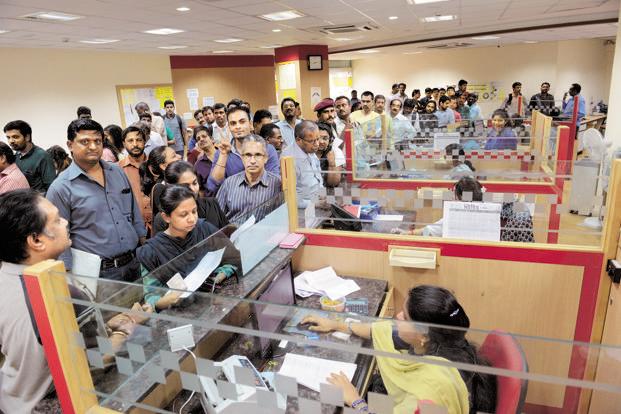In the March quarter, the Indian economy grew 4.6%, making it the eighth successive quarter in which the world’s third largest economy in terms of purchasing power parity registered growth below 5%. For the year ended 31 March, growth was 4.7%, marginally higher than the previous year’s 4.5% but lower than the Central Statistical Office’s prediction. However, this should not give one the impression that Reserve Bank of India (RBI) governor Raghuram Rajan will pare the policy rate when the central bank announces its second bimonthly monetary review on Tuesday. He should refrain from doing so for two reasons. One, the lower cost of money alone cannot prop up economic growth when the investment climate is down in the dumps because of several other factors. Two, inflation continues to remain at uncomfortable levels.
Indeed, at 5.2%, wholesale inflation in April surprised analysts as it was lower than the consensus estimate of 5.7%, which was also the March figure, but retail inflation, or inflation based on the Consumer Price Index (CPI), accelerated 8.59% in the same month from a year earlier, more than the consensus estimate of 8.5% and the 8.3% pace in March. Retail inflation had dropped to 8.1% in February, its lowest since January 2012, and the third monthly decline in a row. Since then, it has been rising.
The rise in April was driven by food inflation (mainly vegetables and fruits) and essential household items even as the decline in wholesale inflation was also driven by food and energy. Both core retail inflation, or non-food and non-oil inflation, as well as core wholesale inflation, or manufactured goods inflation, eased marginally (10 basis points each; core retail inflation dropped to 7.7% from 7.8% and core wholesale inflation dropped from 3.5% to 3.4%) but remained sticky, causing discomfort to the central bank. A basis point is one-hundredth of a percentage point.
It seems that RBI has no choice but to maintain the interest rate at the current level of 8% despite slow economic growth and a contraction in factory output for two months in a row. In fact, the manufacturing sector contracted 70 basis points in 2013-14 compared with 1.1% growth in the previous year. Since he took over as RBI governor in September 2013, Rajan has raised the key policy rate by 75 basis points in three phases to fight entrenched inflation. He has also taken steps to improve the transmission of policy actions across the interest rate spectrum by reducing banks’ dependence on RBI’s overnight money and increasing their access to the seven-day and 14-day term repo. In its April policy, the central bank had projected growth in India’s gross domestic product in fiscal 2015 at 5-6%, but with downside risks to the central estimate of 5.5%.
By reiterating his commitment to bringing down inflation while speaking at a seminar in Japan on Friday, Rajan virtually ruled out a rate cut even as he recognized that the big task before the Bhartiya Janata Party-led National Democratic Alliance government in the short term is reviving growth. At the Tokyo seminar, he also said that the new government’s plan to curb food inflation is sensible and inflationary expectations have fallen.
Incidentally, Rajan has also been talking about growth, which he refrained from in the April policy. Early last week, after meeting finance minister Arun Jaitley, Rajan said: “RBI has always maintained a balance between growth and inflation,” while Jaitley spoke about restoring the pace of growth, containing inflation and focusing on fiscal consolidation.
The April policy kept mum on growth and emphatically said its stance “will be firmly focused on keeping the economy on a disinflationary glide path that is intended to hit 8% CPI inflation by January 2015 and 6% by January 2016”. This was in accordance with the Urjit Patel committee’s recommendations. Of course, it had added that “if inflation continues along the intended glide path, further policy tightening in the near term is not anticipated at this juncture”, in keeping with Rajan’s statement in March that “the policy rate is appropriately set”.
After hiking the rate in the previous policy he had said: “The extent and direction of further policy steps will be data dependent, though if the disinflationary process evolves according to this baseline projection, further policy tightening in the near term is not anticipated at this juncture.”
Is the time ripe for a rate cut? Definitely not. Rajan is expected to maintain the status quo and continue to keep a close watch on the inflation trajectory. In the coming months, food inflation may rise and it will be too much to expect that the new government will address the supply-side issues at the speed of light; a rise in fuel prices will also add to the pressure. Besides, there are apprehensions about a below-normal monsoon with the shadow of El Niño looming large on the horizon.
The Union Budget in July and the monsoon will provide critical inputs to Rajan to decide on the policy stance in coming months. I will not be surprised if he sounds less hawkish in the 3 June policy statement and mentions RBI’s concerns for a slowing economy while reiterating its resolve to continue to fight inflation.
Meanwhile, the bond market seems to be convinced that the new government is serious about fiscal consolidation. If indeed the fiscal deficit is reduced, the level of record government borrowing will come down. Expecting that, the benchmark 10-year bond yield fell to 8.6% on Friday, its lowest in four months. It has fallen nearly a quarter of a percentage point in past fortnight since the new government was voted into power.



